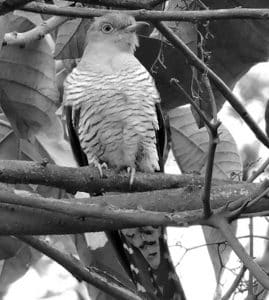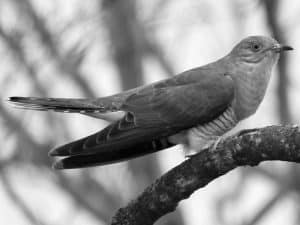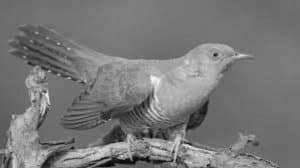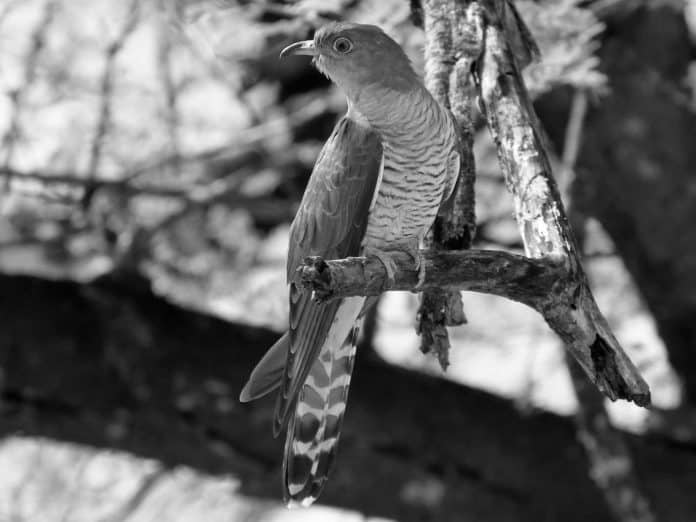Introduction to cuckoos in Tanzania
Tanzania, with its diverse ecosystem, is home to a wide array of bird species, including the intriguing cuckoos. These elusive birds are known for their unique behavior and striking appearances. If you’re an avid birdwatcher or simply someone who appreciates the beauty of nature, spotting cuckoos in Tanzania can be an incredibly rewarding experience. In this visual guide, we will delve into the characteristics and behavior of cuckoos, explore the popular species found in Tanzania, discuss the best time and locations for cuckoo spotting, offer tips for identifying these birds in the field, provide insights into photographing them in their natural habitat, touch upon conservation efforts, highlight other bird species commonly found alongside cuckoos, and provide resources for further learning. So grab your binoculars, and let’s embark on a journey to discover the fascinating world of cuckoos in Tanzania.
Characteristics and behavior of cuckoos
Cuckoos are a family of birds characterized by their slender bodies, long tails, and pointed wings. They vary in size, with some species being as small as a sparrow, while others are as large as a crow. Their plumage displays a remarkable range of colors, from vibrant hues to subtle earth tones. One of the most distinctive features of cuckoos is their call, which often resembles their name, “cuckoo.”
These birds are renowned for their brood parasitism behavior. Unlike most birds, cuckoos do not build their own nests or raise their young. Instead, they lay their eggs in the nests of other bird species, leaving the unsuspecting host parents to raise the cuckoo chicks as their own. The cuckoo chicks often outcompete the host’s own offspring for food, ensuring their survival. This intriguing behavior has fascinated scientists for centuries and adds to the allure of spotting cuckoos in the wild.
Popular species of cuckoos found in Tanzania
Tanzania boasts a rich avian diversity, and cuckoos are no exception. One of the most commonly spotted cuckoos in Tanzania is the African Emerald Cuckoo (Chrysococcyx cupreus). This stunning bird displays a vibrant emerald green plumage, making it a true gem in the avian world. Another notable species is the Klaas’s Cuckoo (Chrysococcyx klaas), which features a striking combination of black, white, and chestnut colors. Its distinct call, resembling its name, echoes through the Tanzanian forests. The Diederik Cuckoo (Chrysococcyx caprius) is also frequently seen, with its unique black and white plumage and distinctively patterned tail.
Best time and locations for cuckoo spotting in Tanzania

To increase your chances of spotting cuckoos in Tanzania, it is essential to know when and where to look. The best time to spot these birds is during the wet season, which typically runs from November to April. During this period, the forests and grasslands of Tanzania burst with life, attracting a plethora of bird species, including cuckoos. The early morning and late afternoon hours are the most active times for bird activity, making it an ideal time to venture into the wilderness.
When it comes to specific locations, the national parks and reserves of Tanzania offer excellent opportunities for cuckoo spotting. The Serengeti National Park, known for its vast plains and diverse wildlife, is a prime location to encounter cuckoos. The Mahale Mountains National Park is another notable spot, with its dense forests and proximity to Lake Tanganyika. The Usambara Mountains and the Selous Game Reserve are also highly recommended for birdwatching enthusiasts.
Tips for identifying cuckoos in the field
Identifying cuckoos can be a challenging task, especially for beginners. However, with some knowledge and practice, you can become adept at recognizing these elusive birds. Here are a few tips to help you in the field:
- Listen for their calls: Cuckoos often make distinct vocalizations that can aid in their identification. Familiarize yourself with the different calls of cuckoos found in Tanzania to increase your chances of spotting them.
- Observe their behavior: Pay attention to how cuckoos behave in the wild. Their flight patterns, foraging techniques, and interactions with other birds can provide valuable clues for identification.
- Study their plumage: Cuckoos exhibit a wide range of plumage variations. Take note of the colors, patterns, and overall appearance of the birds you encounter. A field guide or birding app can be invaluable in helping you identify specific species.
- Take note of their habitat: Different species of cuckoos prefer specific habitats. Understanding their habitat preferences can narrow down the possibilities when trying to identify a cuckoo.
- Join guided birdwatching tours: Consider joining a guided birdwatching tour led by experienced guides. They can offer expert insights and help you spot and identify cuckoos more efficiently.
By employing these tips, you’ll be well-equipped to identify cuckoos and appreciate their unique beauty in the Tanzanian wilderness.
Photographing cuckoos in their natural habitat

Capturing stunning photographs of cuckoos in their natural habitat requires patience, skill, and a bit of luck. Here are some tips to help you capture memorable images:
- Invest in quality equipment: A DSLR or mirrorless camera with a telephoto lens will allow you to capture detailed shots of cuckoos from a distance.
- Learn about bird behavior: Understanding cuckoo behavior will enable you to anticipate their movements and photograph them in action. Observing their feeding patterns and flight paths can help you position yourself for the perfect shot.
- Practice stealth and patience: Cuckoos are elusive birds that can be easily spooked. Approach their habitat slowly and quietly, giving them time to acclimate to your presence. Patience is key when waiting for the right moment to capture a striking image.
- Focus on composition: Pay attention to the background and framing of your photographs. A cluttered or distracting background can take away from the beauty of the cuckoo. Experiment with different angles and perspectives to create visually pleasing compositions.
- Utilize natural light: Take advantage of the soft, warm light during the golden hours (early morning and late afternoon) for capturing breathtaking images of cuckoos. Avoid harsh midday light, which can create harsh shadows and washed-out colors.
Remember, ethical photography practices should always be followed when photographing wildlife. Respect the birds’ space and avoid disturbing their natural behavior for the sake of a photograph.
Conservation efforts for protecting cuckoos in Tanzania
The conservation of cuckoos and their habitats is crucial for their long-term survival. Unfortunately, many bird species, including cuckoos, face various threats in Tanzania. Habitat loss due to deforestation, climate change, and illegal wildlife trade are among the significant challenges these birds encounter.
To protect cuckoos and promote their conservation, several organizations and initiatives are working tirelessly in Tanzania. The Wildlife Conservation Society of Tanzania (WCST) is actively involved in monitoring bird populations, raising awareness, and implementing conservation projects. Additionally, national parks and reserves collaborate with local communities to promote sustainable practices and protect critical habitats.
As individuals, we can contribute to cuckoo conservation by supporting these organizations through donations or volunteering. Educating ourselves and others about the importance of preserving biodiversity is also crucial. By taking action collectively, we can ensure that future generations will continue to marvel at the beauty of cuckoos in Tanzania.
Other bird species commonly found alongside cuckoos in Tanzania
While searching for cuckoos in Tanzania, you are likely to encounter a myriad of other bird species. The country’s diverse ecosystems provide a habitat for an astonishing array of avian life. Here are some notable bird species commonly found alongside cuckoos in Tanzania:
- Hornbills: These large, majestic birds are known for their distinctive bills and vibrant plumage. The Southern Ground Hornbill (Bucorvus leadbeateri) and the African Grey Hornbill (Lophoceros nasutus) are among the hornbill species you may encounter.
- Sunbirds: These tiny, colorful birds are a delight to observe. The Variable Sunbird (Cinnyris venustus) and the Collared Sunbird (Hedydipna collaris) are commonly spotted in Tanzania.
- Weavers: Weavers are known for their intricate nests and vibrant plumage. The Spectacled Weaver (Ploceus ocularis) and the Black-headed Weaver (Ploceus melanocephalus) are frequently seen in Tanzania.
- Honeyguides: These unique birds have a fascinating relationship with humans. They lead people to beehives, hoping to share in the spoils. The Greater Honeyguide (Indicator indicator) is a species you might encounter.
Resources for further learning about cuckoos in Tanzania
For those who want to delve deeper into the world of cuckoos in Tanzania, there are several resources available. The following books, websites, and organizations provide valuable information and opportunities for further learning:
- Books: “Birds of East Africa” by Terry Stevenson and John Fanshawe is an excellent field guide that covers the bird species found in Tanzania, including cuckoos. “Cuckoos of the World” by Johannes Erritzøe, Clive F. Mann, Frederik P. Brammer, and Richard A. Fuller offers an in-depth exploration of cuckoo species worldwide.
- Websites: The African Bird Club (africanbirdclub.org) provides a wealth of information on birds in Tanzania, including cuckoos. The eBird website (ebird.org) allows you to explore recent bird sightings, contribute your own observations, and learn more about specific species.
- Organizations: The Wildlife Conservation Society of Tanzania (wcst.or.tz) is actively involved in bird conservation efforts and offers volunteer opportunities and educational programs. The Tanzania Bird Atlas (tanzaniabirdatlas.org) is a citizen science project that encourages birdwatchers to contribute their observations to help monitor bird populations.
Conclusion

Spotting cuckoos in Tanzania is an adventure that unveils the beauty and mystery of these remarkable birds. From their unique behavior to their striking appearances, cuckoos have captivated birdwatchers and nature enthusiasts for centuries. By understanding their characteristics, knowing where to find them, and employing the tips and techniques outlined in this visual guide, you can enhance your chances of spotting and identifying cuckoos in the Tanzanian wilderness.

































